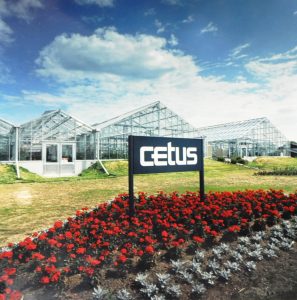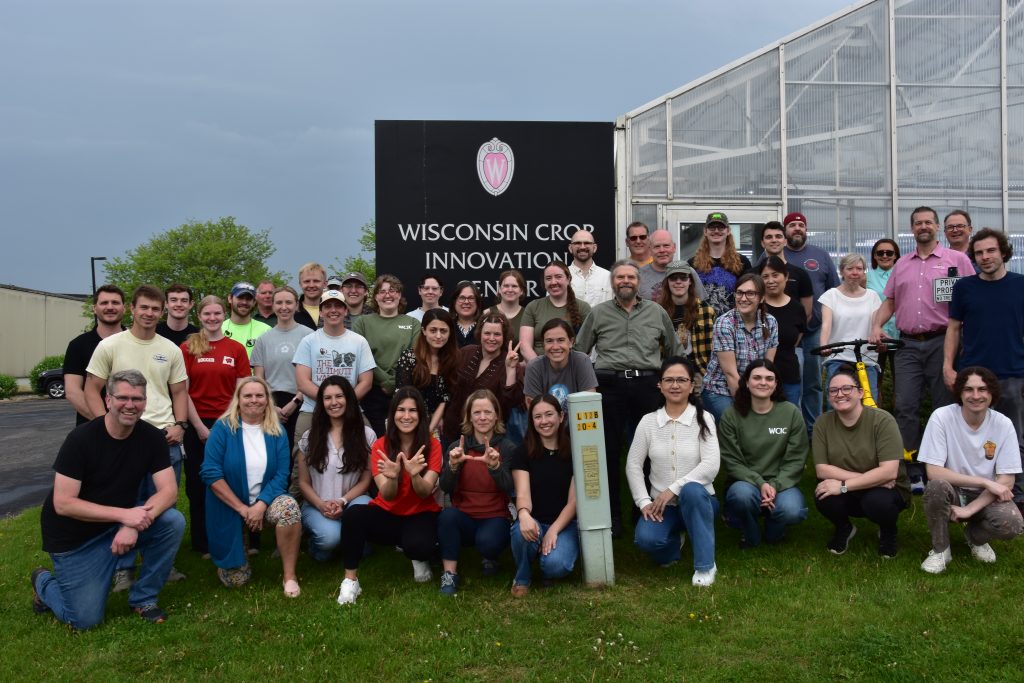Our Mission
Enhance our capacity for transgenic and gene-editing tools by developing and licensing highly efficient, genotype-flexible technologies. These advancements will be applied to both elite and vital crop varieties, bringing about transformative leap. Additionally, we are committed to nurturing the next generation of crop biotech experts through recruitment and comprehensive training initiatives.
Welcome to WCIC, the administrative unit housed within the College of Agriculture and Life Sciences at the University of Wisconsin-Madison. Established in January 2017, WCIC thrives on a legacy of innovation and discovery within the realm of agriculture biotechnology. Nestled in the heart of Middleton, WI, our foundation is rooted in the generous contribution of a cutting-edge 100,000 sq. ft. crop facility, gifted by construction in 1981, guided by the visionary UW-Madison Professor, Winston Brill. For a comprehensive look into our historical journey, visit our history page.
At WCIC, we offer unparalleled plant transformation and editing services across a diverse spectrum of species, including elite varieties, catering to clients and collaborators worldwide. Our dedicated Production Team specializes in transforming key crops such as Maize, Soybean, Sorghum, Wheat, Barley, Medicago, Brachypodium, and Hemp. Moreover, our adept Research and Development Team has achieved significant breakthroughs in transforming challenging species such as chickpea, common bean, cowpea, tobacco, tomato, and potato.
We are passionate about exploring new frontiers in agriculture science. If you have a vision for pioneering research collaborations involving novel plant species or cutting-edge technologies, we invite you to engage with us. Your ideas could be the next catalyst for transformative change in the world of agriculture. Let’s embark on the journey together; your innovation, our expertise — unlimited possibilities.
History
2017
YEAR FOUNDED
100,000 SQ. FT.
WCIC BUILDING
26,000 SQ. FT.
GREENHOUSE SPACE
Wisconsin Crop Innovation Center (WCIC) holds a prominent place in Agricultural Biotechnology history. Originally known as Cetus of Madison, Inc. in Middleton, WI, the facility was started under the direction of former UW-Madison Emeritus Professor, Winston Brill in 1981 and owned by the Cetus Corporation of Emeryville, CA. The Wisconsin Alumni Research Foundation (WARF) played a key funding role in the early days of the company as well. Cetus of Madison, Inc. was initially focused on evaluating and testing a wide variety of natural rhizobium species to better understand their role in nitrogen fixation and nodulation in legumes with the hope of someday enabling maize to have that capacity.


As the interest in biotechnology increased in the early 80s, the focus changed to inventing and innovating ways to introduce genes into plants. In 1984, Cetus Corp. sold half of its interest in Cetus of Madison, Inc. to the WR Grace Co. and subsequently the name of the company changed to Agracetus, Inc. (combining Grace/Cetus together). During this time Agracetus developed an electric “gene gun” and transformation methods that revolutionized the plant transformation process. Many plant species were subsequently transformed including; Tobacco, Peanut, Sunflower, Soybean, Maize, Cotton, Canola, Poplar, Wheat, Rice, among others. Research into cotton fiber quality, transformation process improvements, PCR method development, insect and disease resistance, and herbicide tolerance was ongoing in various labs in the facility.
In 1990, WR Grace Co. acquired full ownership of Agracetus. During the early 1990’s Agracetus ventured into research in DNA vaccines (using their improved “gene gun”) and contracted their plant transformation services to others within the industry, including the Monsanto Company. After successfully generating plants that eventually became commercial products for Monsanto, including Roundup Ready Soybeans and Bollgard Cotton, the facility was acquired by Monsanto in 1996. Over the next 20 years, Monsanto used the facility as its primary site for soybean and cotton transformation. Other R&D at the site included, corn, canola, wheat, rice, and alfalfa transformation, gene expression, molecular testing, and seed chipping/genotyping. The site was considered a “center of excellence” for Monsanto due to its highly innovative employees, high throughput transformation capabilities, and its ability to consistently perform above and beyond expectations.
In 2015 due to business consolidation considerations, Monsanto decided to relocate a number of their remote functions back to their main site in St. Louis, MO. Through negotiations with the University of Wisconsin and in hopes that the site would continue on for the betterment of agriculture, Monsanto generously donated the facility to the University Research Park and the UW-Madison in December 2016.

Facility Details
The building houses a state-of-the-art transgenic plant laboratory which supports unprecedented scientific advancement opportunities to improve plants for humans, livestock, and the environment.
WCIC key features
Approximately 26,000 square feet of highly automated, controlled, and isolated greenhouse spaces
4,800 square feet headhouse
Internal environmental growth areas (including tissue, culture and plant growth spaces)
Numerous research labs
Clean rooms
Cold seed storage
Other areas ideally set up to create a world class plant R&D and production facility
The facility is monitored and backed up 24/7 to reduce risk to experiments and to ensure that high quality products are consistently delivered to our customers.
Growth Space Details
Automatic watering and fertigation system setup
Pest management / pesticide application
Room environmental condition scheduling
Room environmental data collection, analysis, and archiving
Weekday on-site monitoring
24-hour Andover monitoring, alarm notification, and alarm response
Office/lab – ethernet and wireless access and access to utilities and common use spaces
Laboratory – laminar flow hoods, RO/DI water, and access to utilities and common use spaces
Our team

